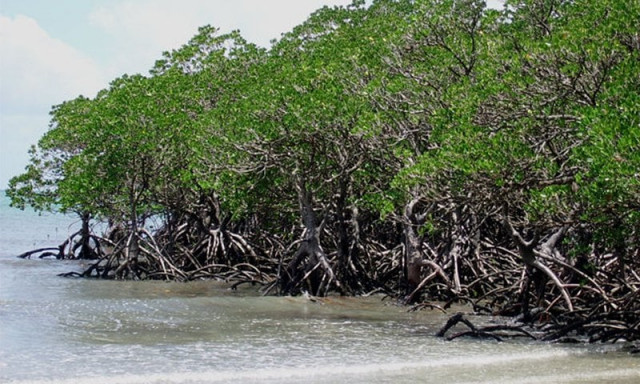Research unveils carbon storage power of planted Mangroves
New research shows planted mangroves can store up to 70% of the carbon stock after just 20 years

Ecologists from the US Forest Service and their partners have published groundbreaking research revealing that planted mangroves can store up to 70% of the carbon stock found in intact mangrove stands after just 20 years, according to a press release published in Eureka Alert website.
For years, scientists have acknowledged the exceptional carbon absorption and storage capabilities of mangroves. However, there was limited data on the time it takes for planted mangroves to achieve carbon storage levels similar to those of intact mangroves.
"About ten years ago, Sahadev Sharma, then with the Institute of Pacific Islands Forestry, and I discovered that 20-year-old mangrove plantations in Cambodia had carbon stocks comparable to those of intact forests," stated Rich MacKenzie, also from the Institute of Pacific Islands Forestry.
MacKenzie and Sharma collaborated with a global team of mangrove researchers, led by Carine Bourgeois from the Forest Service’s International Programs office. Using logistic models built from 40 years of data and nearly 700 planted mangrove stands worldwide, the team found that after 20 years, planted mangroves achieved 71-73% of the carbon stock of intact stands.
These findings could significantly impact global mangrove restoration efforts. Over the past five decades, 35% of the global mangrove area has been lost due to historical factors, human-driven land use changes, extreme weather events, and erosion.
"As our dataset grows and more data become available, we hope researchers and stakeholders will gain new insight into planning and techniques for restoring mangroves," Sharma stated.
Read: Mangrove cover increases significantly
Part of the ongoing research involves monitoring mangroves to assess their progress. "Periodic and regular monitoring of mangroves can provide useful data on the survival and success of restoration efforts and help devise adaptive management strategies as needed," stated Rupesh Bhomia from the Center for International Forestry Research and World Agroforestry (CIFOR-ICRAF).
Globally, there is growing recognition of the importance of conserving and restoring mangroves. These trees are not only carbon storage powerhouses but also serve as coastal barriers during tsunamis and storm surges. Additionally, they provide habitats for diverse species and nurseries for many aquatic animals.
However, MacKenzie cautions that mangrove plantations are not always the best solution for restoration. "Properly planned and implemented mangrove plantations are more effective at restoring carbon stocks than degraded stands. However, this does not mean that mangrove plantations are always the best restoration method," he stated.
The researchers emphasized that planting mangroves cannot replace the conservation of intact stands. "Our models indicate that replanting in all highly restorable mangrove areas would absorb less than one percent of annual global emissions over 20 years. That’s why conserving existing mangrove stands is paramount," Bourgeois emphasized.



















COMMENTS
Comments are moderated and generally will be posted if they are on-topic and not abusive.
For more information, please see our Comments FAQ